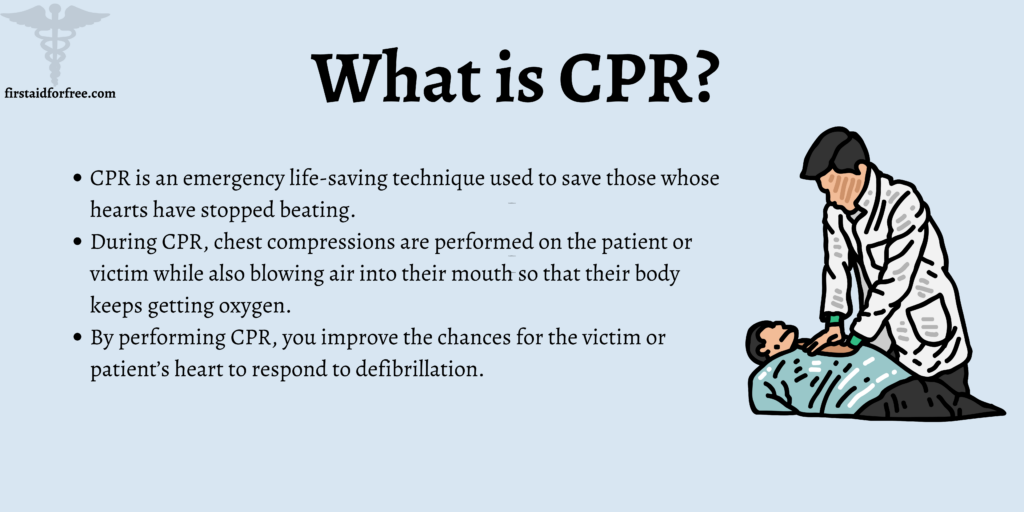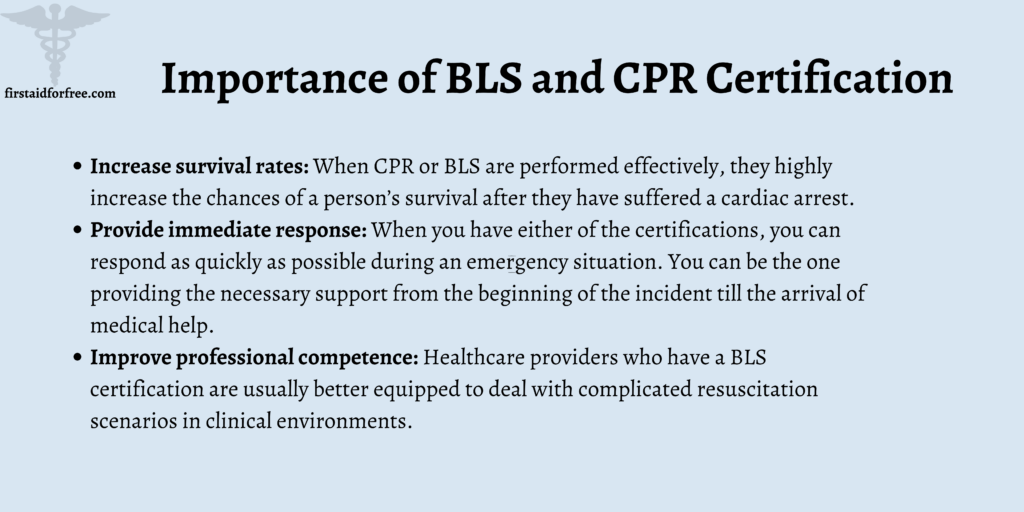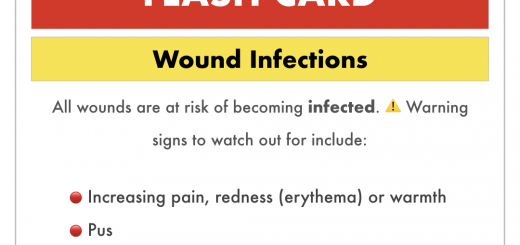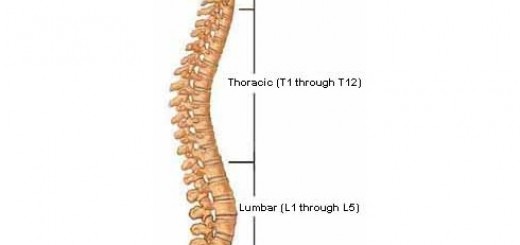Is BLS the Same as CPR? 4 Key Differences Explained
Were you aware that about 65% of individuals in the United States have received CPR training at one point during their lives? However, only 18% of the people are up to date regarding CPR training.
The procedure of CPR, which is used to save people in emergency situations, is known by many, but did you know that there is another such technique known as BLS?
In case this is the first time you’ve heard of it, let us give you a brief overview:
- Both BLS and CPR are life-saving techniques that are used during emergencies.
- When you know the specifics of these two techniques, you can use your knowledge to help someone in the middle of a life-threatening circumstance.
- These two techniques do have some similarities, but there are also distinctions between them.
Evidently, it’s not only important to be aware of these techniques, but it’s also vital to renew your certification as required. In my experience, knowing how to perform CPR and BLS can help you save more lives than you can possibly imagine.
If you have ever thought to yourself, “Is BLS the same as CPR?” then we will be answering that question in this article. We will also be diving into what both the certifications entail and the differences between the two to know about.
What is CPR?

As per the 2023 Heart Disease and Stroke Statistics, of the over 356,000 out-of-hospital cardiac arrest situations that took place, 40.2% of the individuals received bystander CPR. So, what is CPR?
Here is what you need to know about CPR or cardiopulmonary resuscitation:
- CPR is an emergency life-saving technique used to save those whose hearts have stopped beating.
- During CPR, chest compressions are performed on the patient or victim while also blowing air into their mouth so that their body keeps getting oxygen.
- By performing CPR, you improve the chances for the victim or patient’s heart to respond to defibrillation.
What is BLS?
BLS, or Basic Life Support, is a higher level of medical care when compared to CPR, which is why its certification course is also more advanced. BLS does include CPR, but it’s usually administered by:
- Healthcare providers
- Paramedics
- First responders
- Public safety professionals
Listed below are some more crucial pieces of information about BLS:
- BLS is meant for people who experience cardiac arrest or respiratory distress. It’s the procedure they require until they receive advanced medical care.
- BLS includes an initial assessment, airway maintenance, and CPR.
- Jobs that could require you to get a BLS certification include:
- Police officers
- Doctors and nurses
- Firefighters
- EMTs and paramedics
- Dentists, hygienists, and dental assistants
- Advanced lifeguards
Difference Between CPR and BLS Certification
Let’s now dive right into the differences between CPR and BLS certifications:
Target Audience
CPR certification is mainly meant for laypersons and individuals who don’t work in the field of healthcare. It’s meant to provide training to those who wish to gain knowledge and learn the skills needed to provide CPR in emergency situations.
Examples of those who often get CPR certification include teachers and coaches of a sports team. It could also prove useful when you find someone suffering from a medical emergency in a public place, such as a shopping mall.
A BLS certification, on the other hand, is specifically designed for healthcare professionals and those who work in a medical atmosphere.
The certification is geared towards healthcare workers who come across complex medical situations, which is why they need to have more proficiency in resuscitation techniques.
Training
CPR certifications teach individuals about fundamental life-saving techniques. This includes:
- How to give chest compressions
- How to use an AED or automated external defibrillator
- How to provide rescue breaths
BLS certifications go much deeper when it comes to the area of resuscitation. The ones who receive this training become adept at handling complex situations in medical settings, such as cardiac arrests.
Some of the topics that healthcare professionals get to learn during the training for BLS certifications are:
- Advanced CPR techniques
- How to work efficiently with and in a medical team
- Advanced airway management
Application
CPR certifications can be applied outside a medical setting as well. This means that whenever there is a non-medical situation where you need to respond immediately, you can do so when you’re CPR certified.
The places where CPR certifications come in useful include:
- Schools
- Public places
- Sports events
- Fitness centers
The application for BLS certifications, though, mainly takes place in healthcare settings. The places where BLS certification holders get to provide advanced life support include:
- Clinics
- Hospitals
- Ambulance services
The kind of training they receive prepares them to administer a level of care that is higher than what is usually seen in non-medical scenarios.
Renewal Requirements
CPR certifications usually remain valid for two years. After this period, one must renew the certification to stay updated about the latest recommendations and techniques of CPR.
The renewal cycle of BLS certifications is shorter in comparison and needs to be renewed every year or two. Since the duration of the renewal interval is shorter, healthcare professionals get to stay updated about the additions regarding medical guidelines and the field of resuscitation.
Importance of BLS and CPR Certification
Both BLS and CPR certifications are essential whenever someone is suffering from a respiratory emergency. If you have been planning to get either of the certifications, listed below are the reasons why they are both so important:
- Increase survival rates: When CPR or BLS are performed effectively, they highly increase the chances of a person’s survival after they have suffered a cardiac arrest.
- Provide immediate response: When you have either of the certifications, you can respond as quickly as possible during an emergency situation. You can be the one providing the necessary support from the beginning of the incident till the arrival of medical help.
- Improve professional competence: Healthcare providers who have a BLS certification are usually better equipped to deal with complicated resuscitation scenarios in clinical environments.
FAQs
What is the ABC principle of CPR?
The ABC principle of CPR includes airway, breathing, and chest compressions.
What is the ratio of one-person CPR?
The ratio of one-person CPR is 30 compressions to two breaths.
What is AED in BLS?
An AED refers to an automated external defibrillator, which is a device used during BLS.
How many cycles of CPR should you perform in two minutes?
Five sets.
Conclusion
The key takeaways from this article are:
- CPR and BLS are both life-saving techniques to help someone who is going through a medical emergency, such as cardiac arrest.
- Both these certifications enable you to acquire the skills and knowledge needed to help someone in emergencies.
- Although CPR and BLS are somewhat similar, the two do have certain differences, with the main one being that BLS is a more advanced certification than CPR.
- While CPR is meant for anyone who wants to learn the technique, BLS is aimed at healthcare professionals.
- BLS also includes the administration of CPR.






